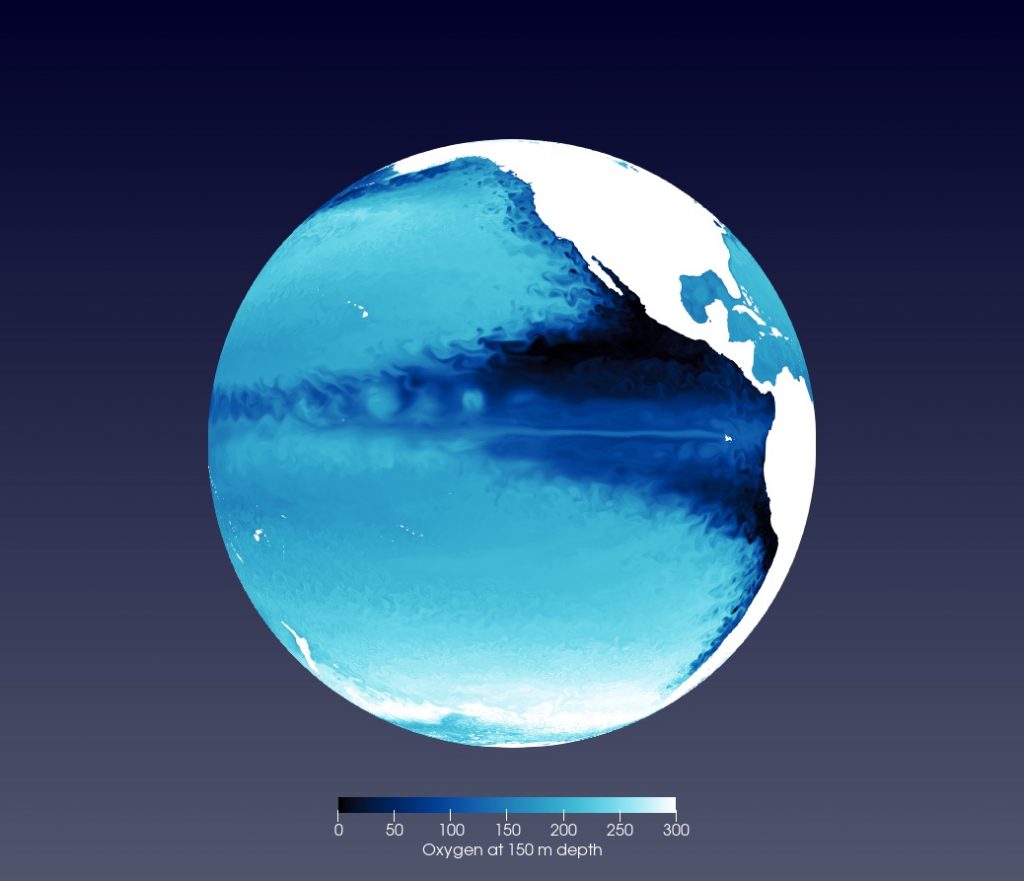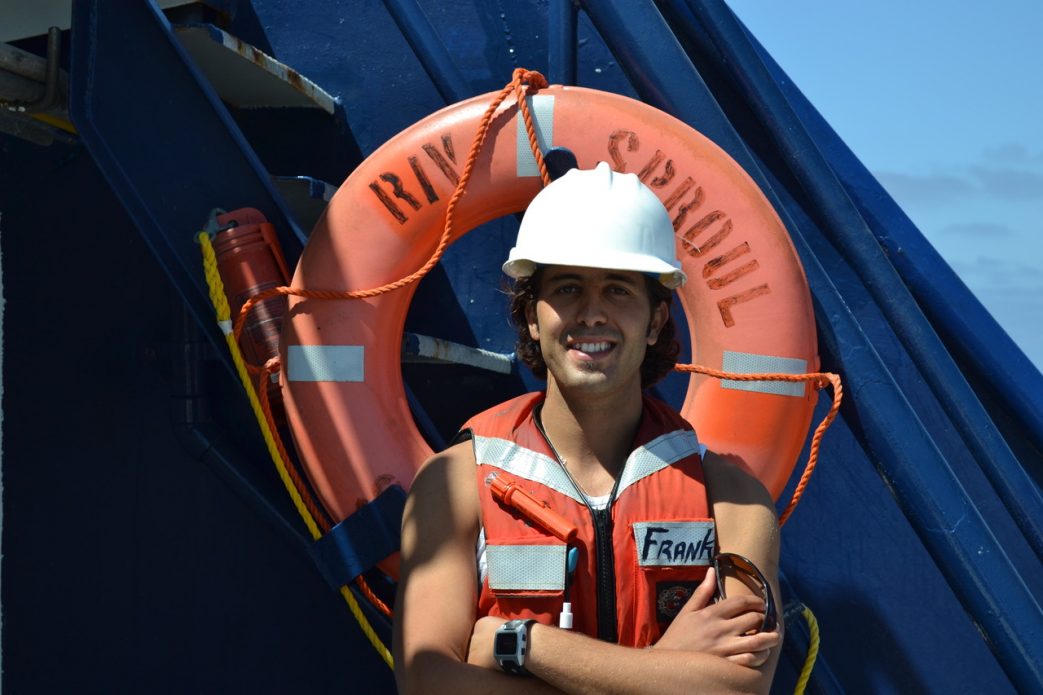This week we’re highlighting postdoctoral scholar Yassir Eddebar and his current work at the center. Yassir received his PhD from Scripps Institution of Oceanography while working in the Carbon Dioxide (Keeling Curve) Research Group.
Q: What climate change-related research projects are you working on currently?
A: I am currently studying the oxygen minimum zones (OMZs) of the tropical Pacific. OMZs are regions where dissolved oxygen ([O2]) levels are naturally low due to poor ventilation and microbial respiration (the conversion of organic carbon to carbon dioxide by tiny bacteria) at depth. They are sometimes referred to as dead zones because few marine organisms can persist at such low oxygen levels. Whether these OMZs will expand or shrink as the ocean continues to warm is quite uncertain because: i) we don’t fully understand what controls the OMZs structure and variability, and ii) global climate models don’t completely represent regional (~10-100 km) circulation patterns, which might be critical to controlling the OMZs behavior.
I’m also leading an NSF-funded project with scientists from Scripps and the ocean modeling group at the National Center for Atmospheric Research (NCAR) to model how smaller scale (<100 kilometer) ocean circulation features, such as eddies, affect OMZs.

Q: What aspect of your research helps us better understand or adapt to climate change?
A: Improved process understanding and realistic modeling of the oxygen minimum zones are critical to predicting their future in a warming climate. By better understanding the regional effects of ocean warming on oxygen content and ecosystems in the tropical Pacific, we can help inform the design of appropriate marine resource and fisheries management and adaptation strategies for the 21st century.
Q: What does a typical workday look like for you?
A: My mornings are dedicated to various tasks, such as writing, preparing slides for a class lecture or a seminar, engaging with a visiting policymaker or local teacher, reading or reviewing a paper, or meeting with team members on a project-specific task. The afternoon is great for long periods of focused analysis, writing, and reading, punctuated by a seminar or a brief walk. I feel privileged to work at Scripps, surrounded by so much natural beauty and intellectual stimulation.
Q: How did you get interested in your specific topic, or science in general?
A: I first became interested in science as a student in my mother’s 5th-grade math class, where I was encouraged to ask questions and think clearly and critically from an early age. I later took “Marine Science 100” with Dr. Tom Garrison at Orange Coast College, whose captivating lectures introduced me to oceanography and climate science, and inspired me to pursue a career in research and education. Dr. Garrison’s lecture on El Niño Southern Oscillation (ENSO) especially stuck with me. I was intrigued by how ocean-atmosphere interactions in the tropical Pacific could impact climate and life nearly everywhere else. Studying ocean biogeochemical dynamics (e.g. ocean oxygen and carbon cycles) is ideal because it combines physical, biological, and chemical processes quite seamlessly. My teachers and mentors at Scripps were also instrumental in promoting my scientific curiosity and pushed me to pursue new and interesting questions.
Q: What are some surprising things that people might not know about you?
A: English is my third language, French is second, and Arabic is my native tongue. Another interesting fact is that I’ve always lived at about 33 degrees N latitude – North Morocco and Southern California.
Q: What climate change information or resources do you want people to be aware of that they may not already know about?
A: There is a wealth of high-quality climate, ocean, and atmospheric information that is easily accessible to the public and educators through powerful visualization software from NOAA and NASA. These include satellite observations (e.g. ocean surface temperature, chlorophyll, currents, surface air temperature, aerosols, ice fraction, etc.), subsurface ocean observations from the World Ocean Atlas (e.g. temperature, nutrients and [O2]), and climate model simulations, all of which can be easily accessed through these online tools:
1- NASA Worldview: https://worldview.earthdata.nasa.gov
2- NOAA View Data Exploration Tool: https://www.nnvl.noaa.gov/view/
3- NASA JPL State Of The Ocean (SOTO): https://podaac-tools.jpl.nasa.gov/soto
Thanks for sharing, Yassir!


